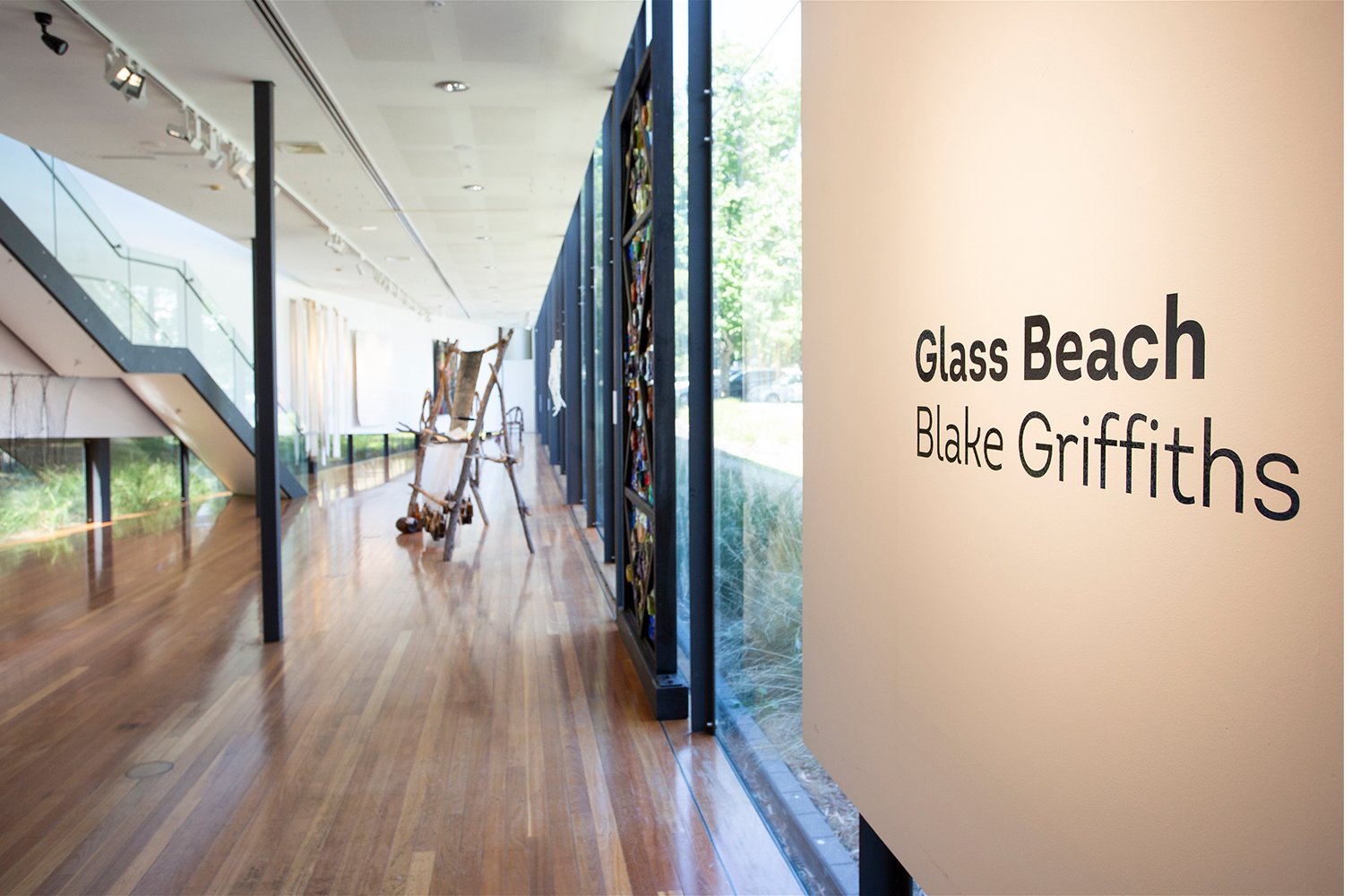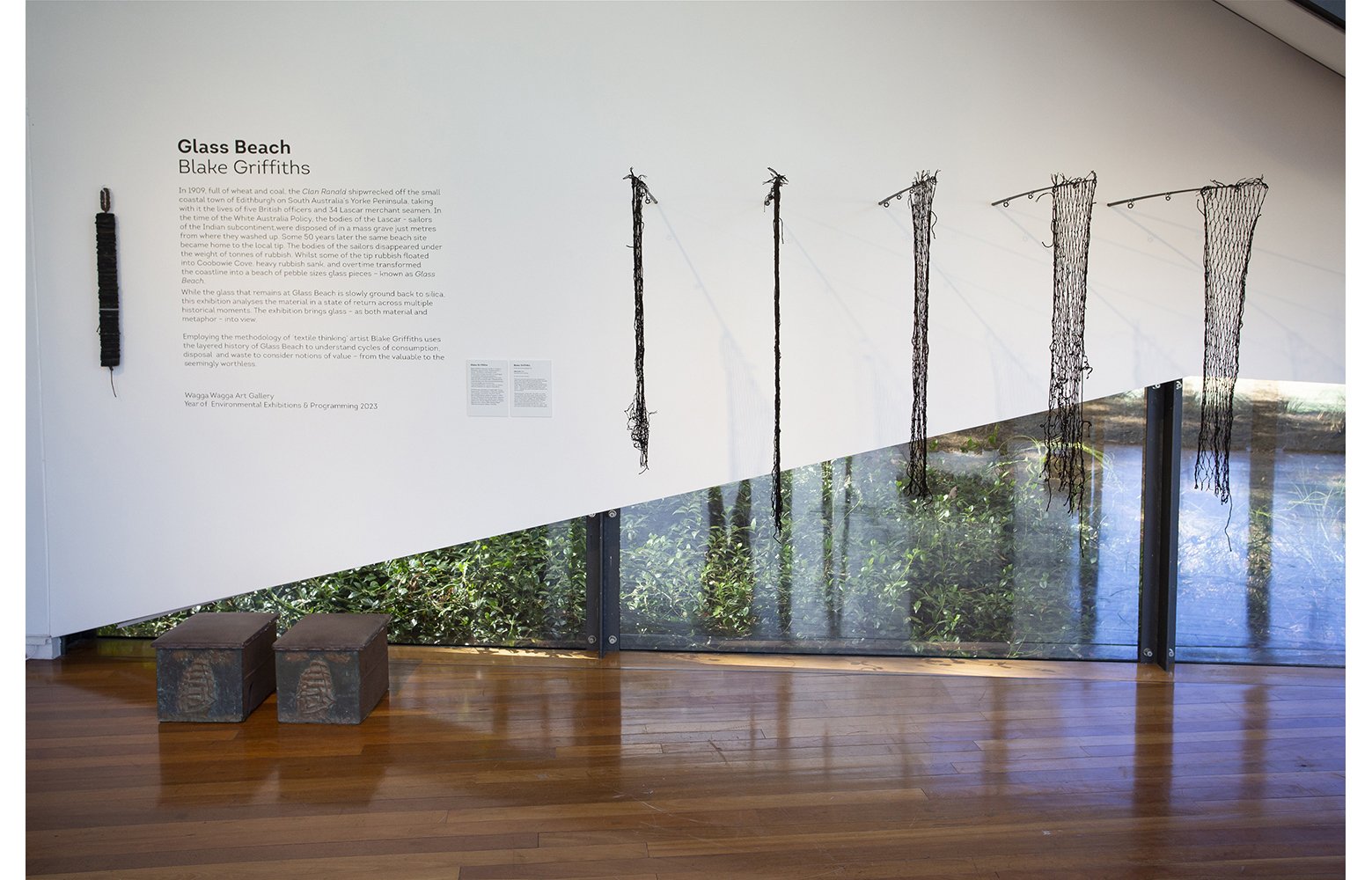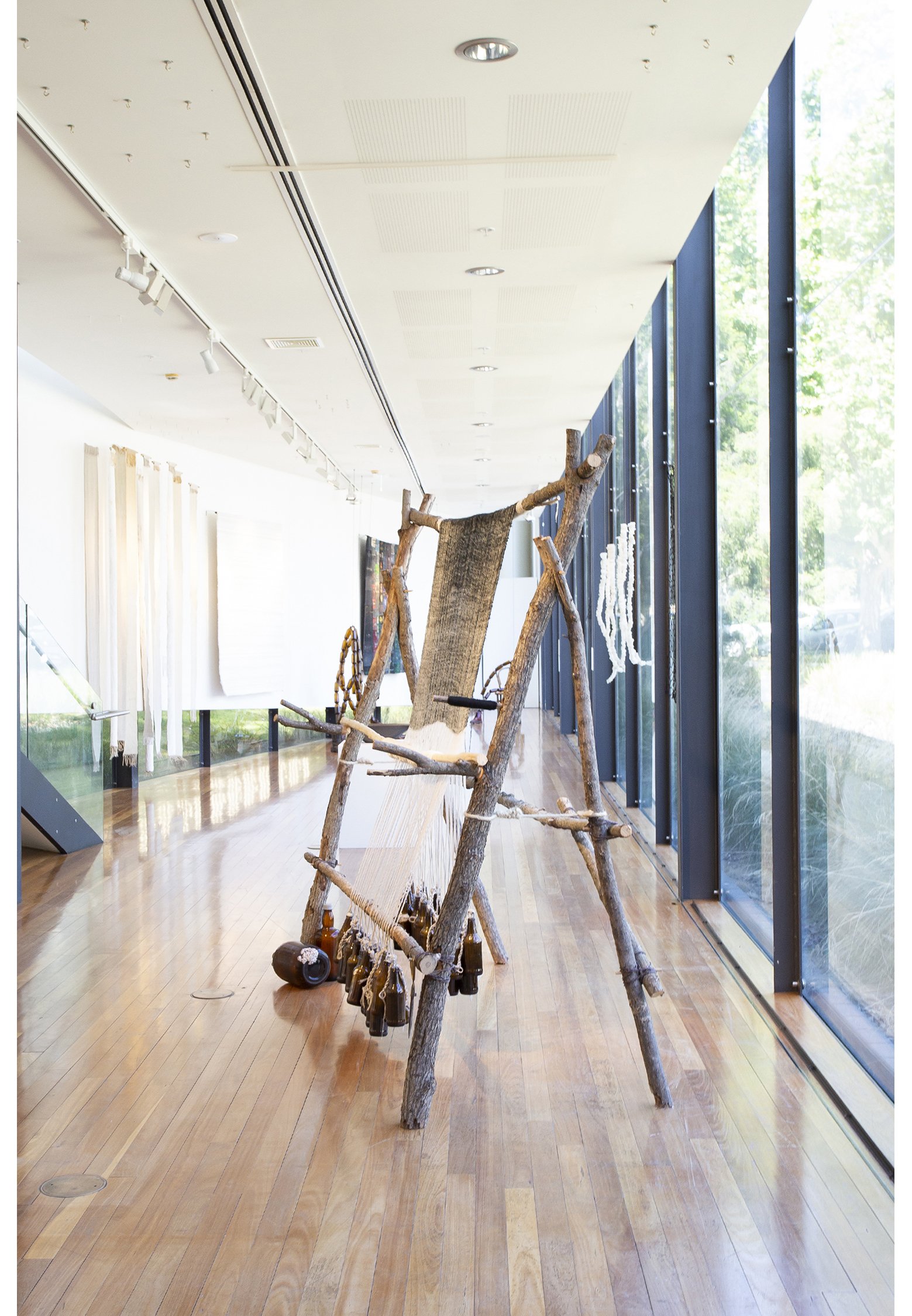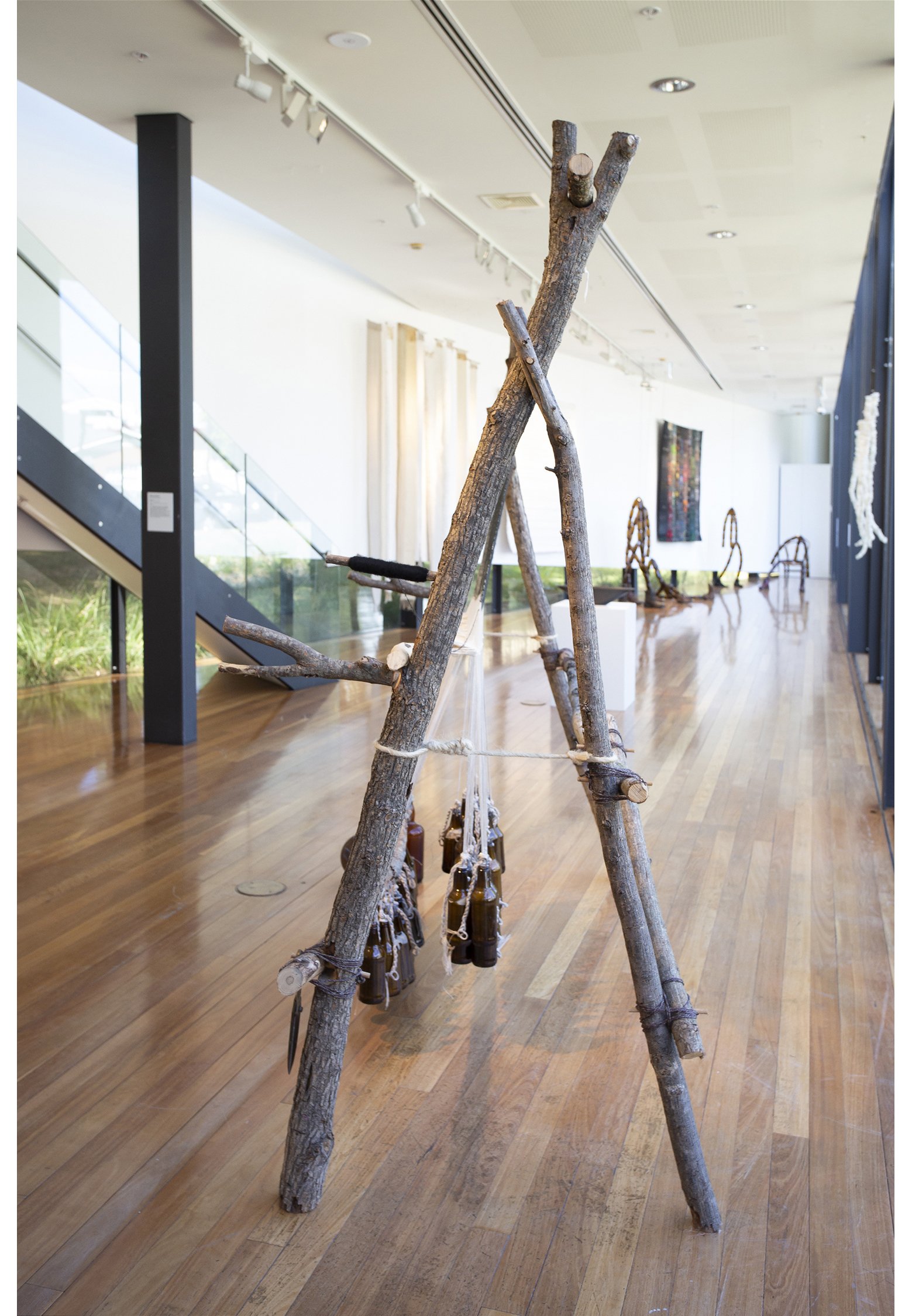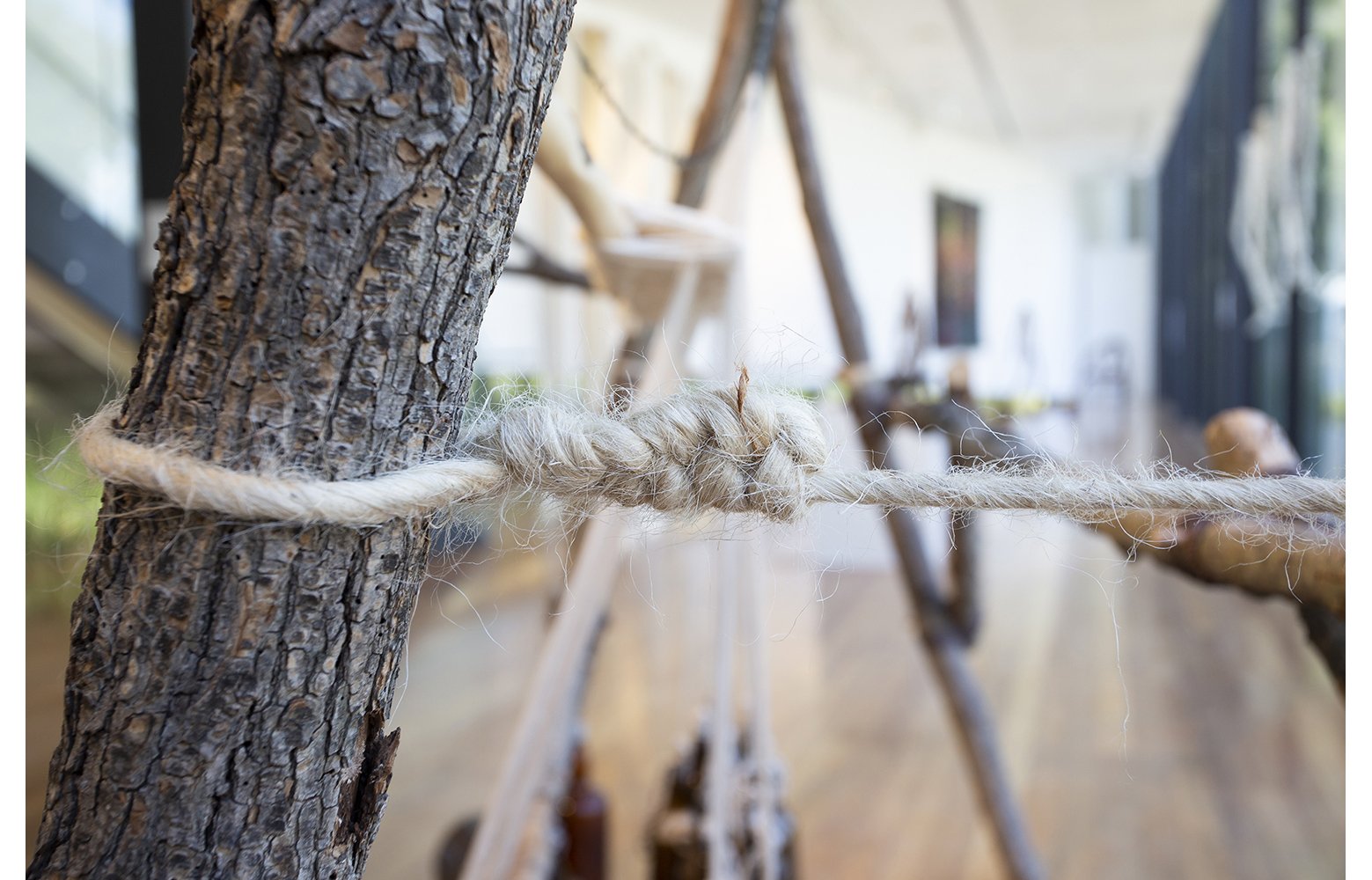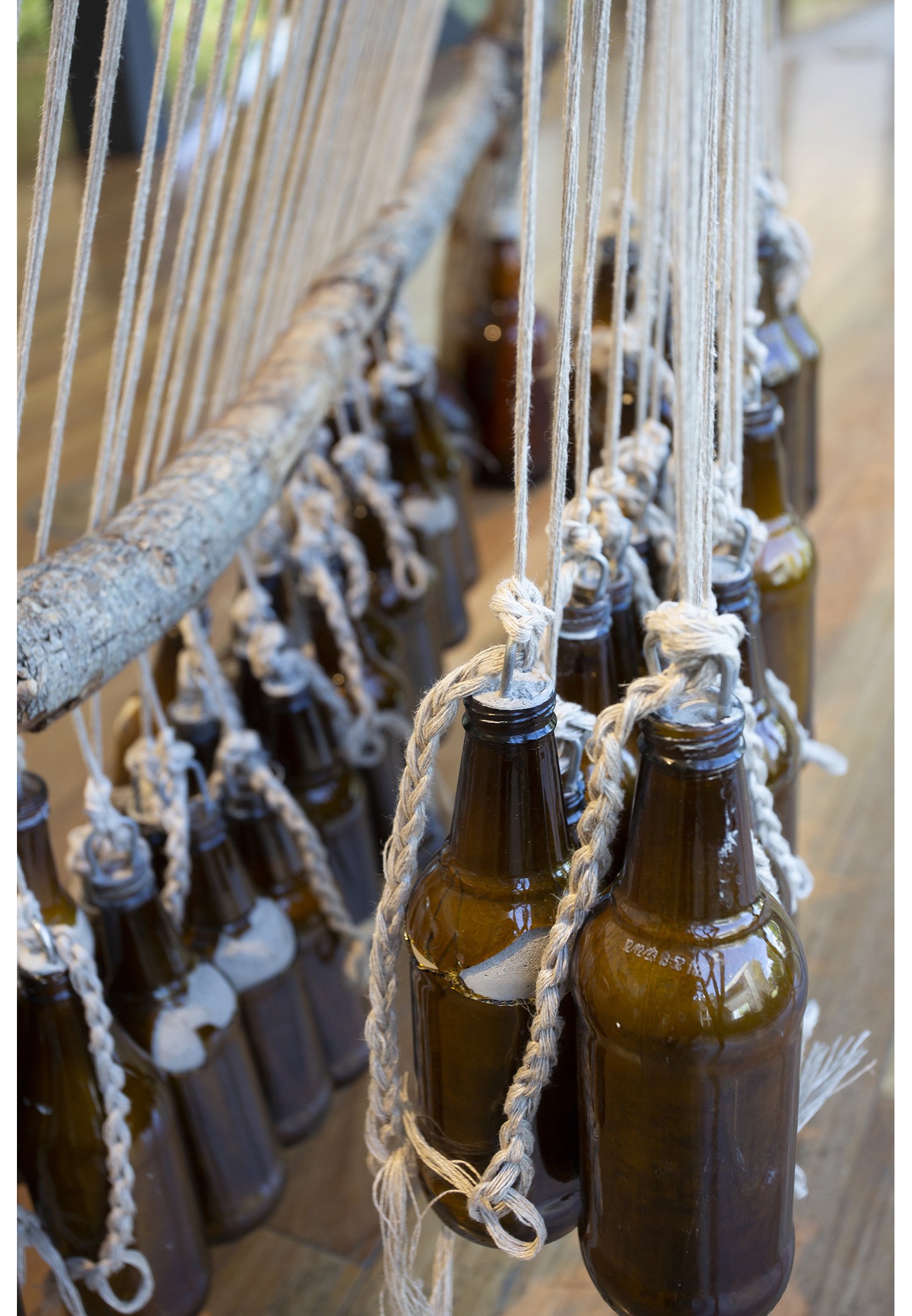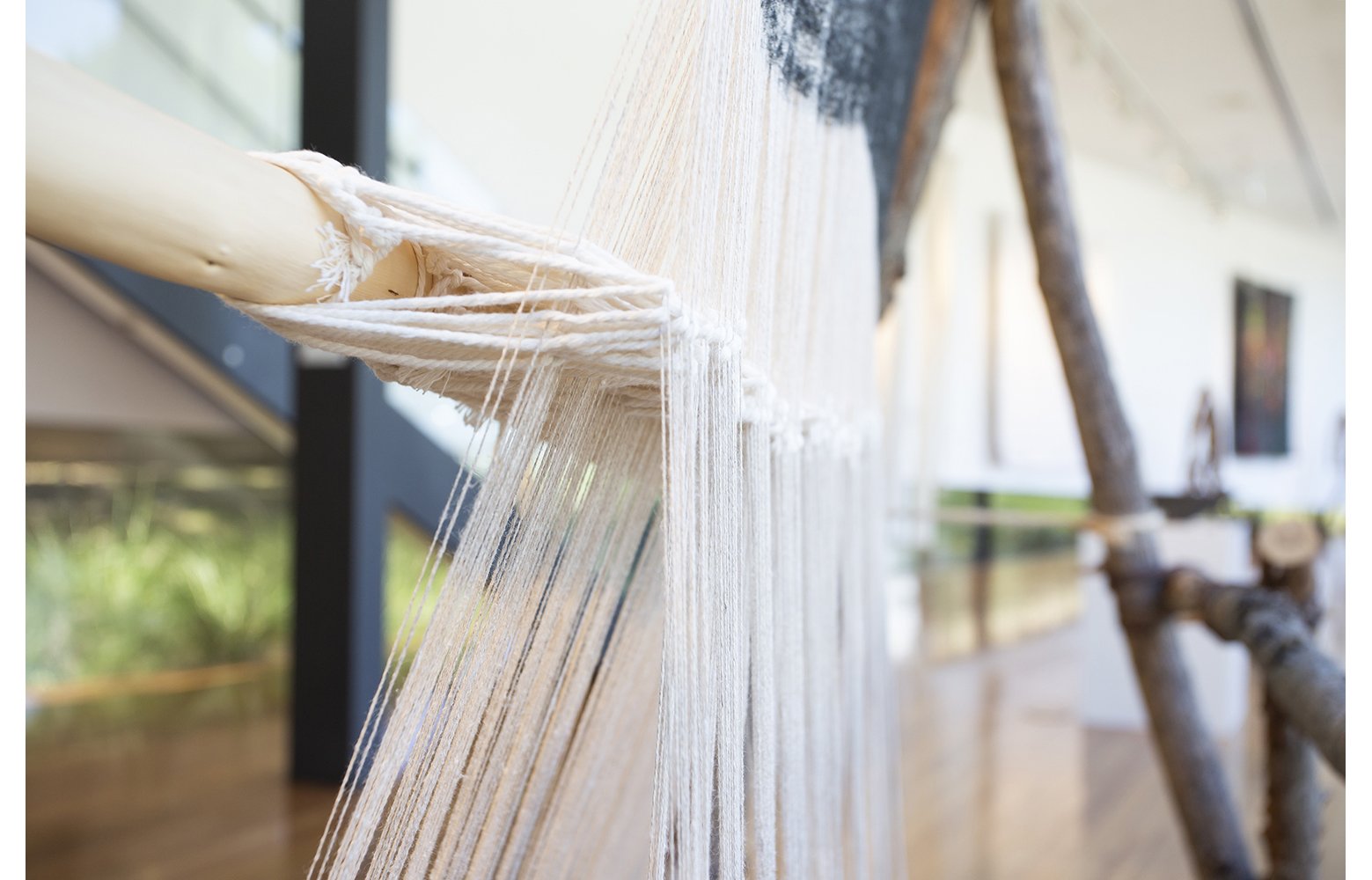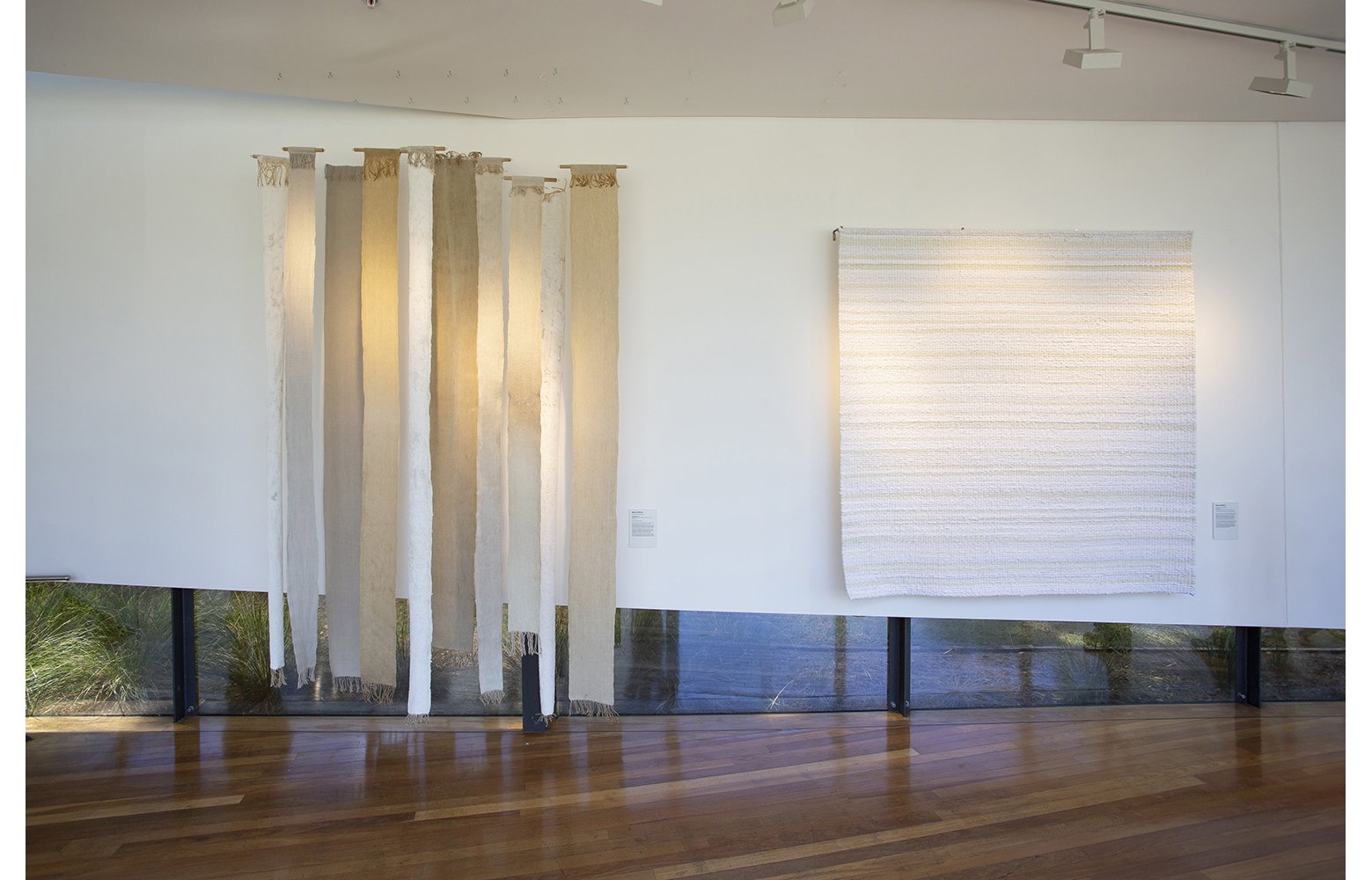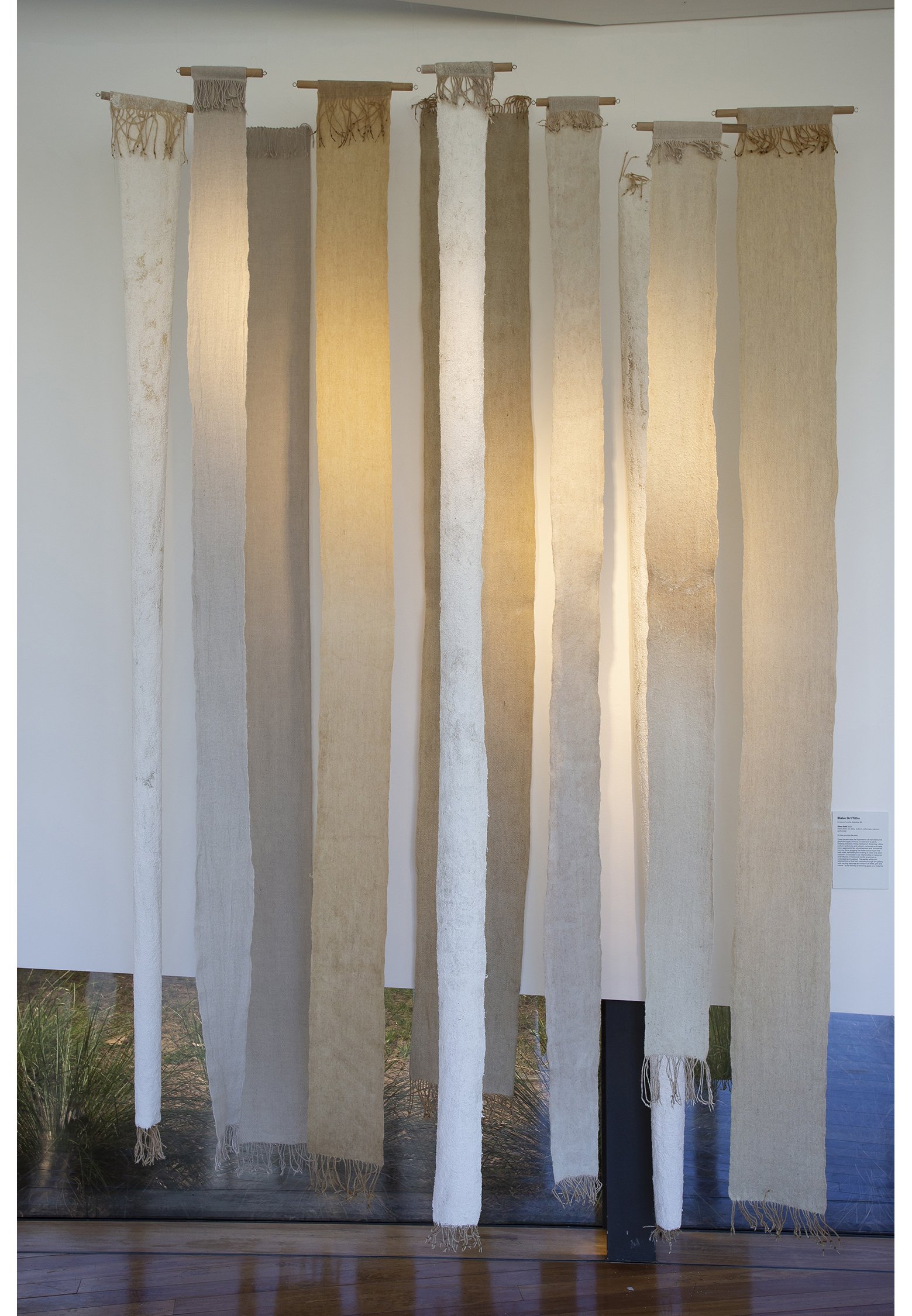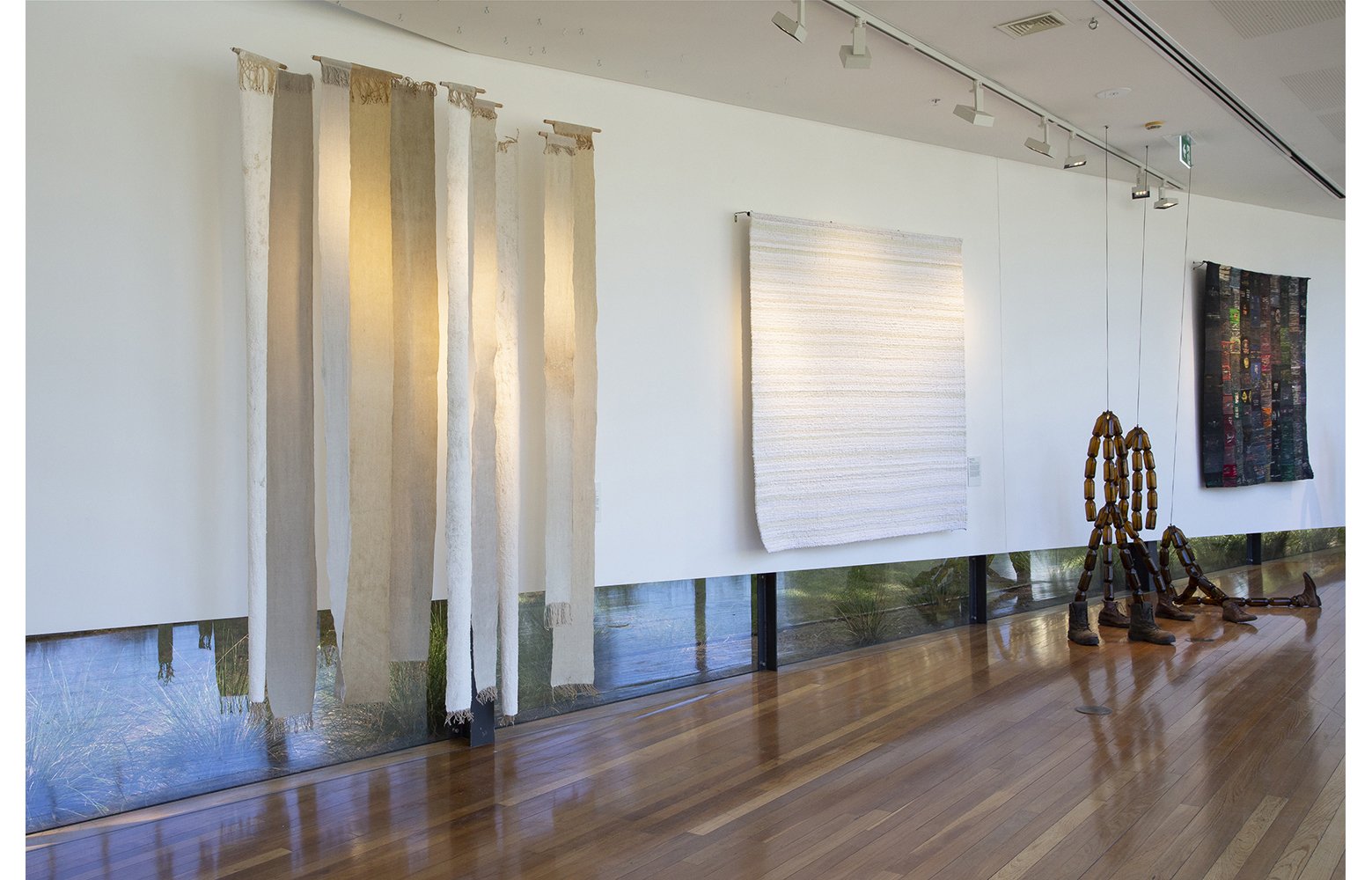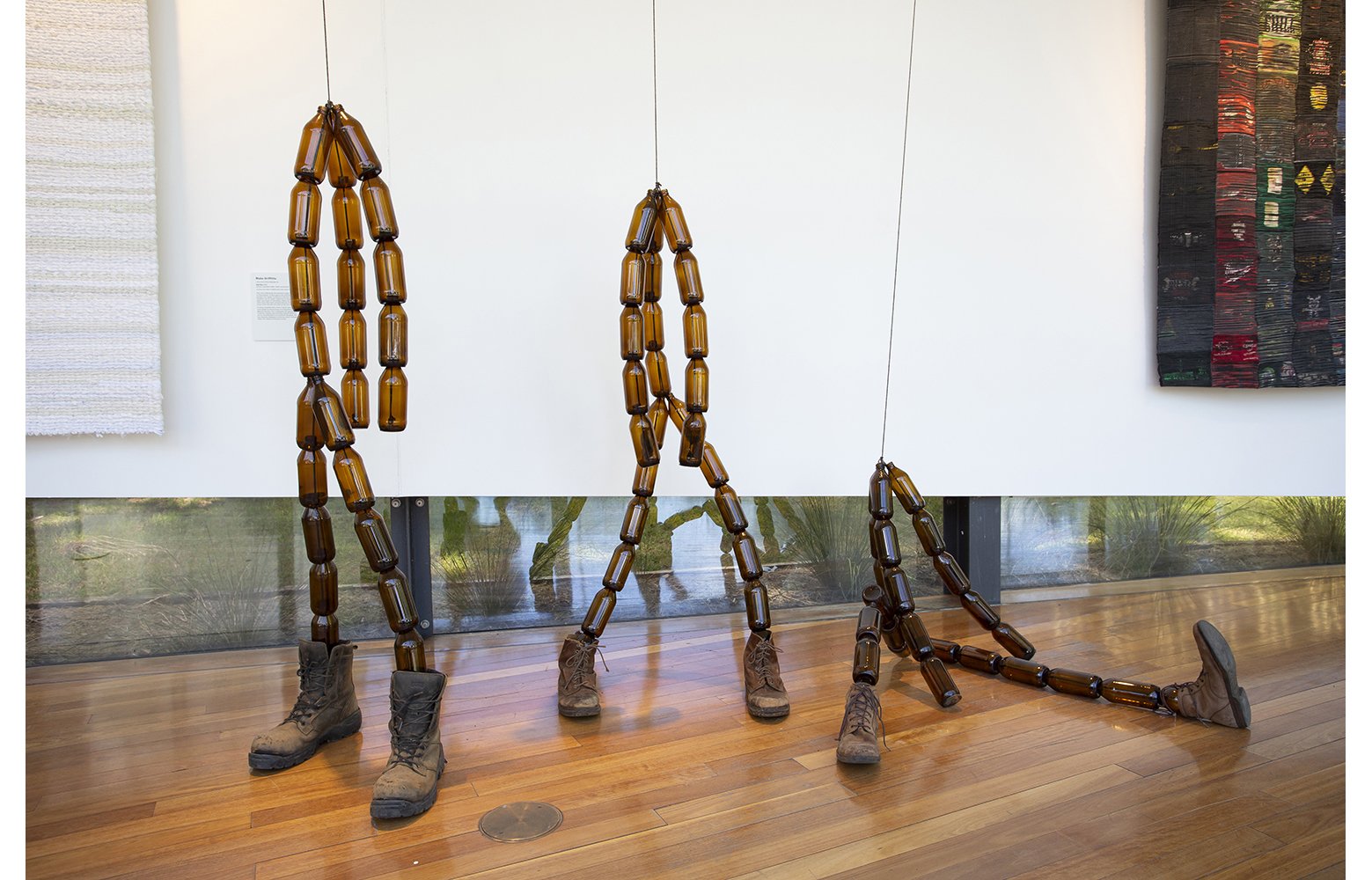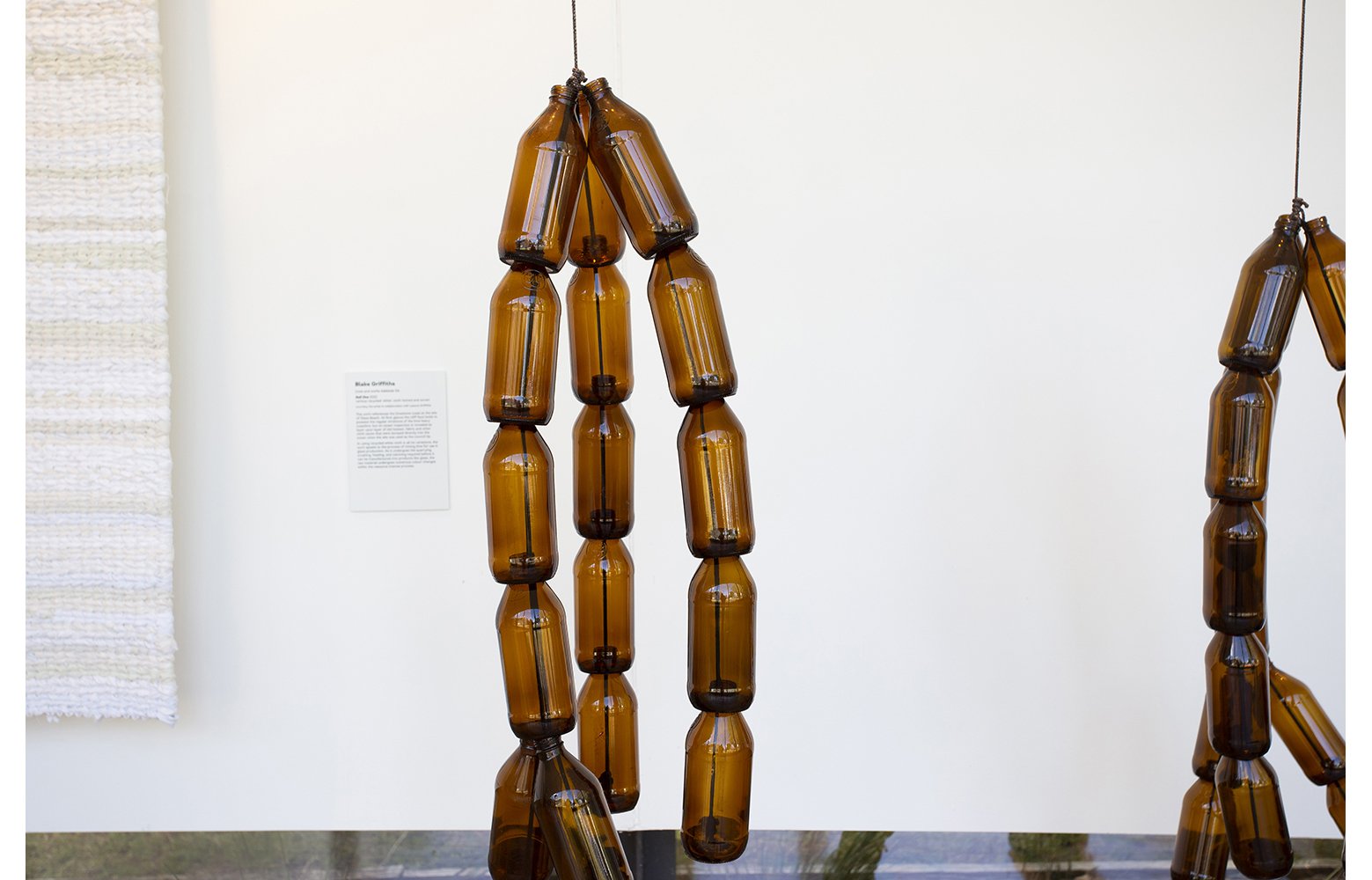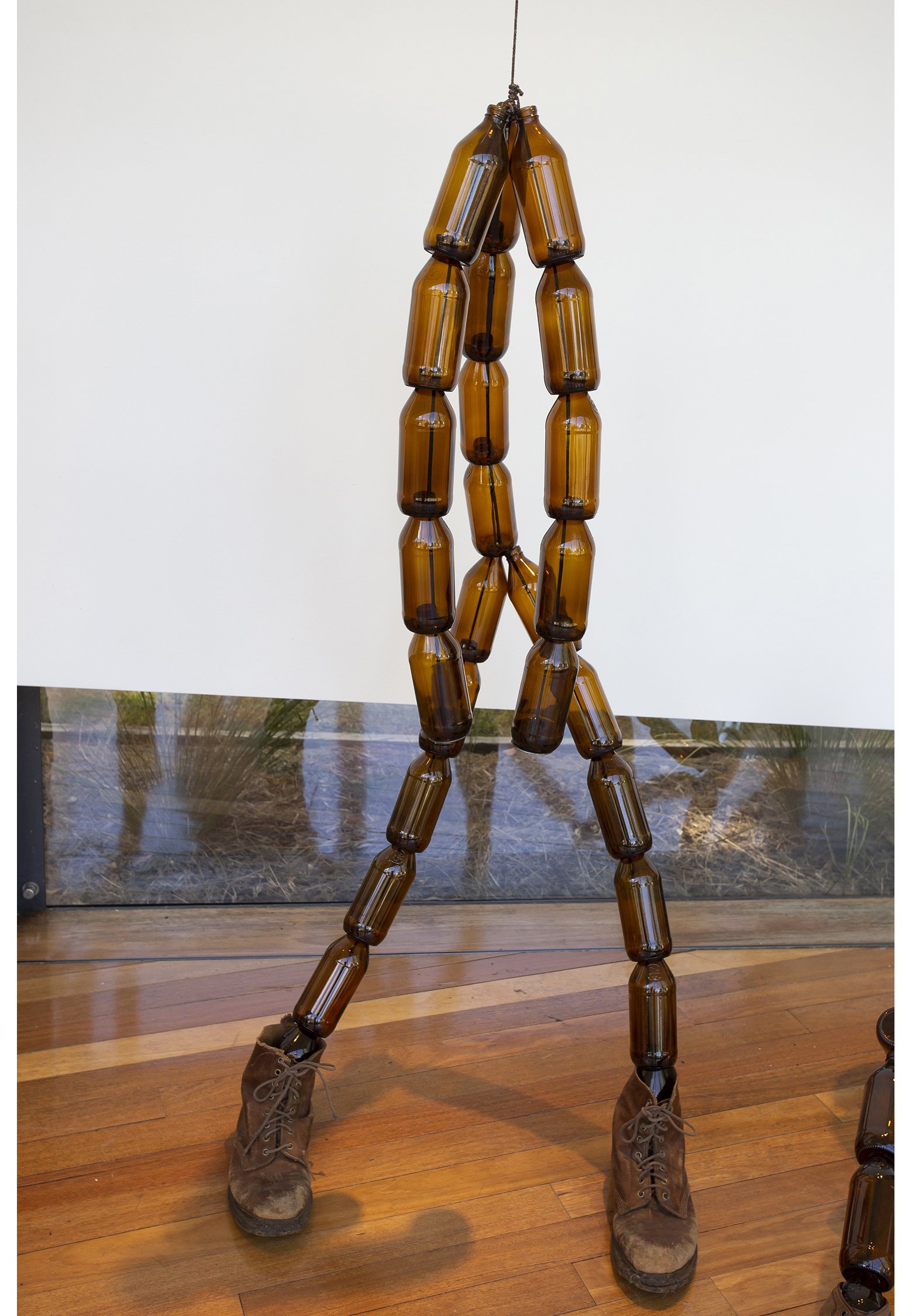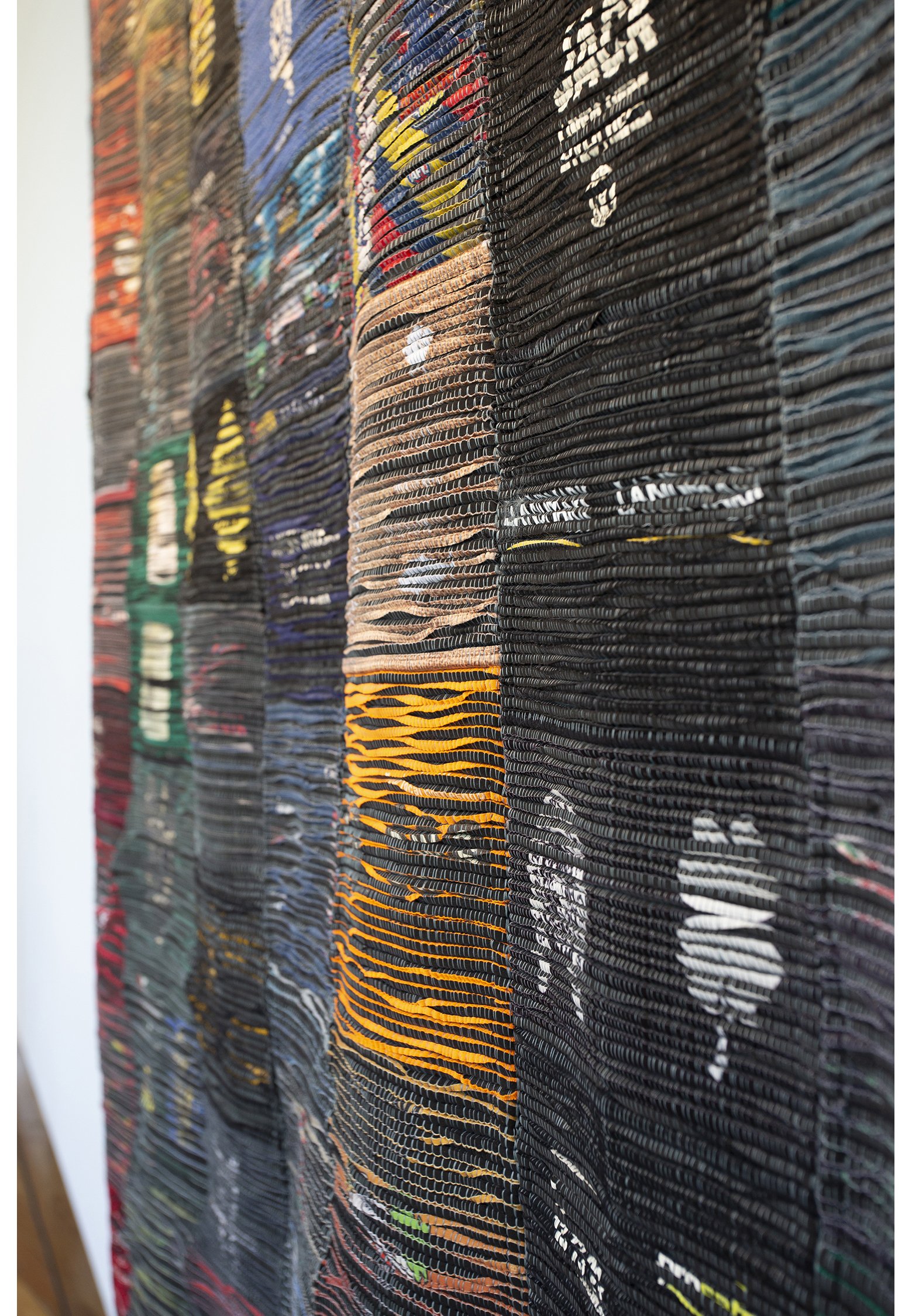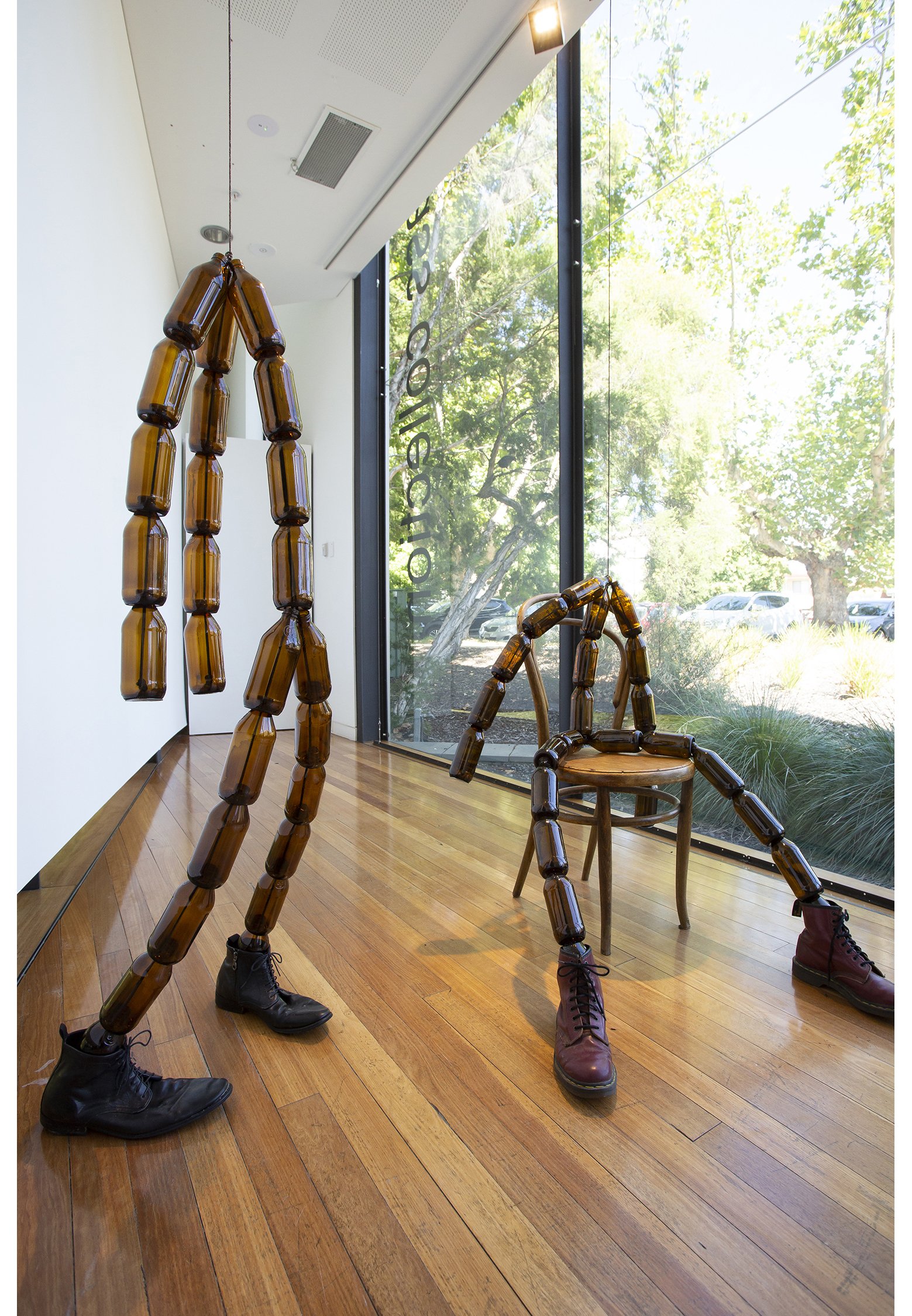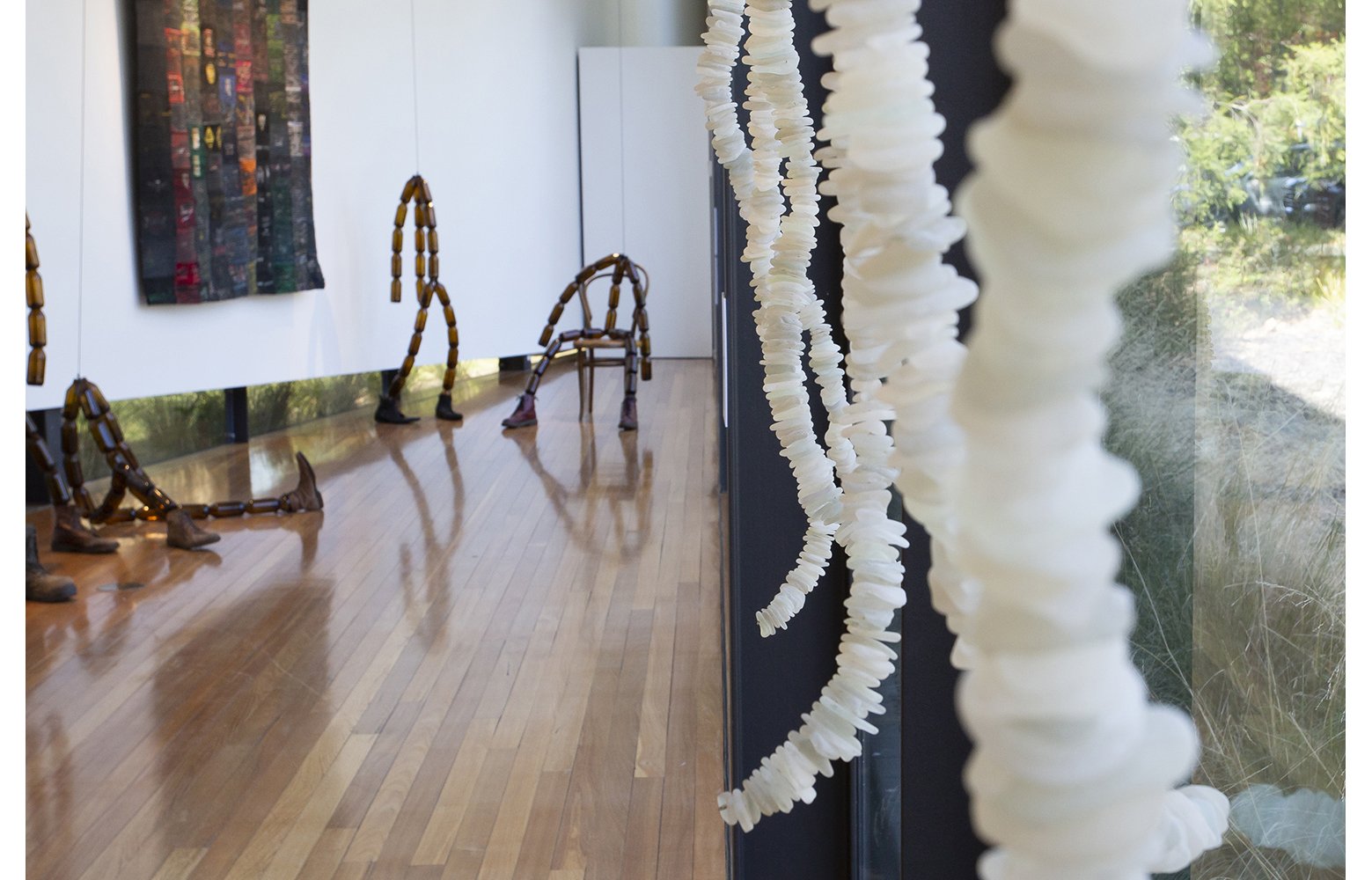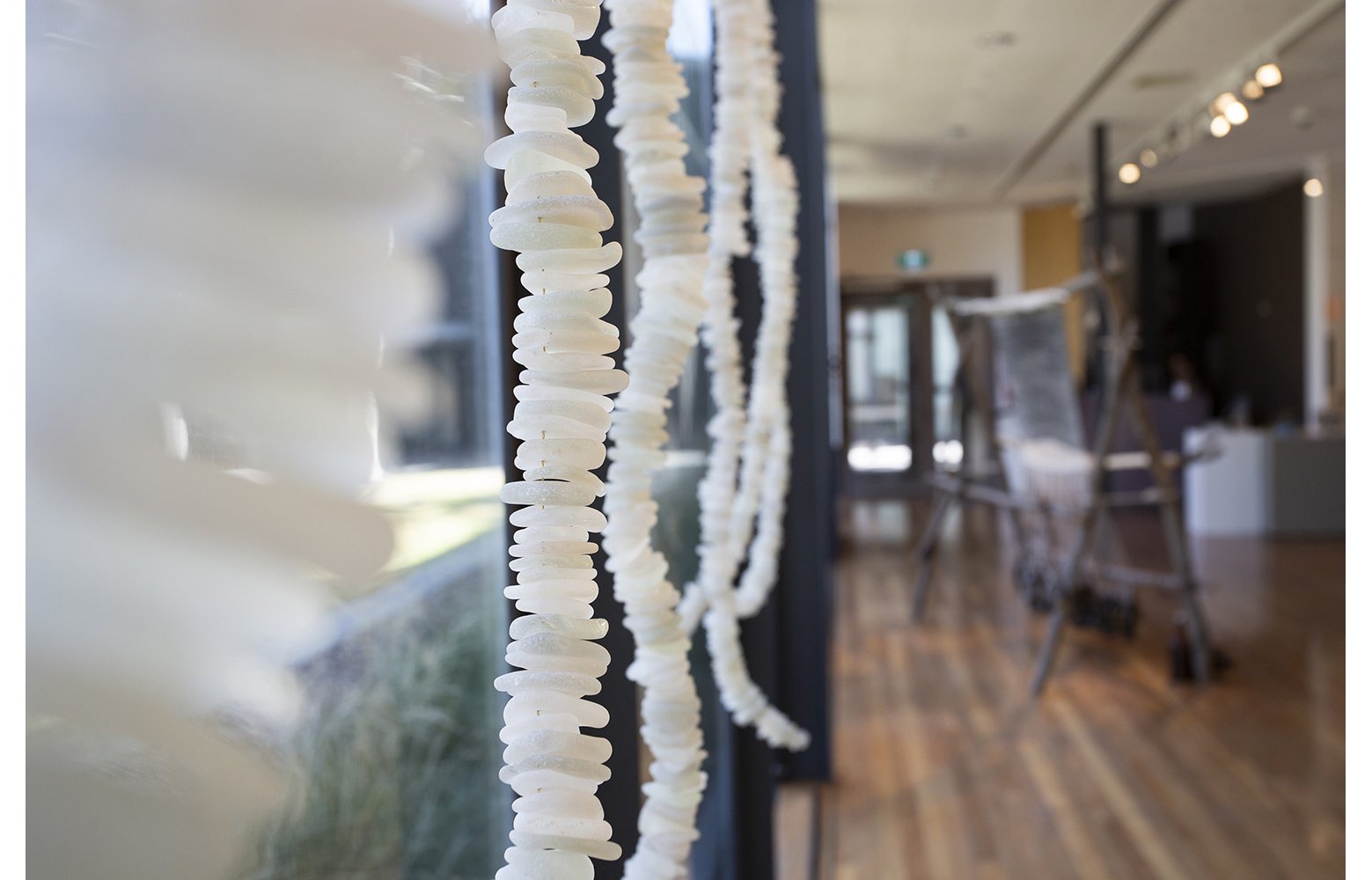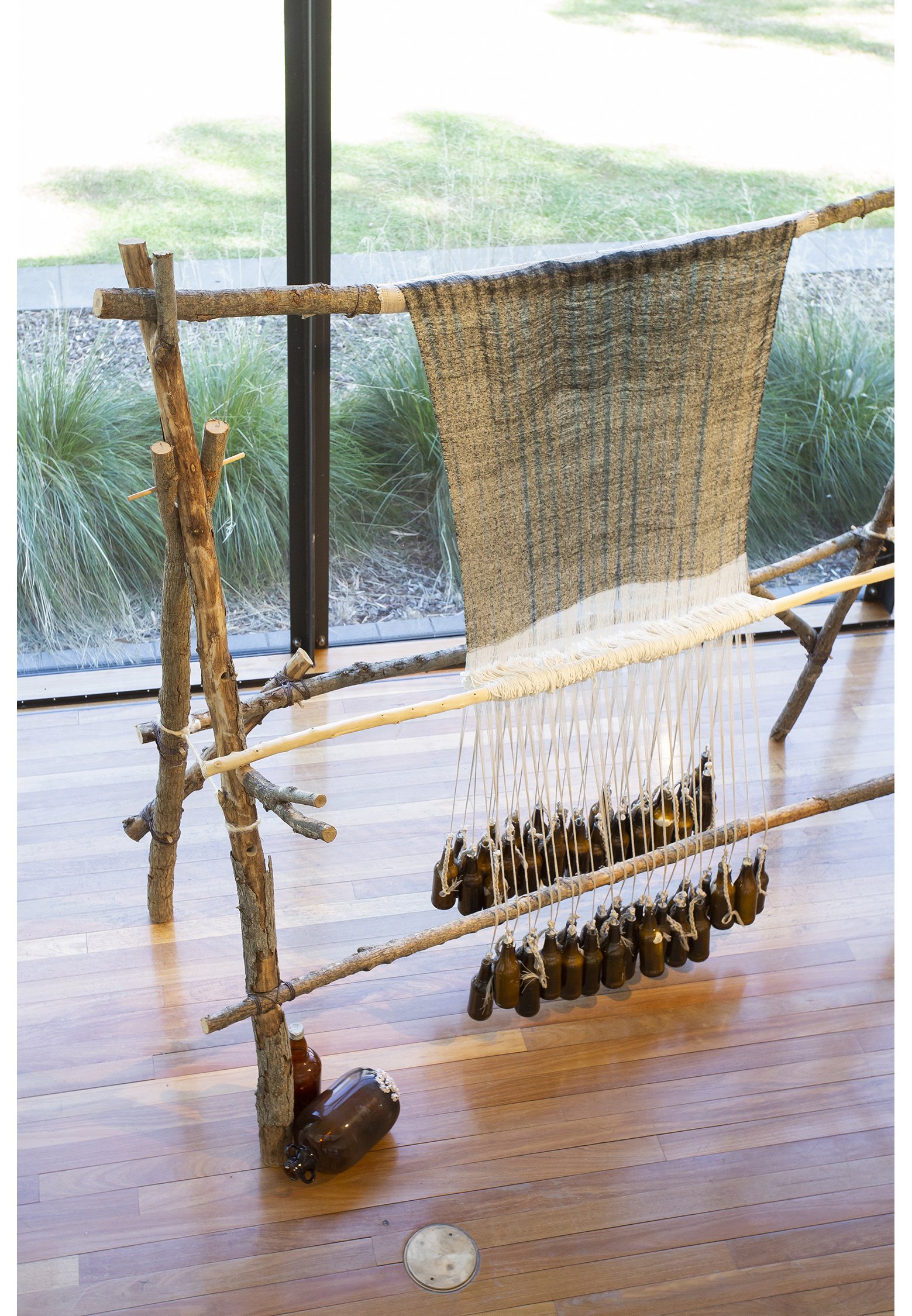Glass Beach;
In 1909, full of wheat and coal, the Clan Ranald shipwrecked off the small coastal town of Edithburgh on South Australia’s Yorke Peninsula, taking with it the lives of five British officers and 34 Lascar merchant seamen. In the time of the White Australia Policy, the bodies of the Lascar - sailors of the Indian subcontinent, were disposed of in a mass grave just metres from where they washed up. Some 50 years later the same beach site became home to the local tip. The bodies of the sailors disappeared under the weight of tonnes of rubbish. Whilst some of the tip rubbish floated into Coobowie Cove, heavy rubbish sank, and overtime transformed the coastline into a beach of pebble sized glass pieces - known as Glass Beach.
While the glass that remains at Glass Beach is slowly ground back to silica, this exhibition analyses the material in a state of return across multiple historical moments. The exhibition brings glass - as both material and metaphor - into view.
Employing the methodology of ‘textile thinking’ artist Blake Griffiths uses the layered history of Glass Beach to understand cycles of consumption, disposal and waste to consider notions of value - from the valuable to the seemingly worthless.
Exhibited at The National Glass Art Gallery - Wagga Wagga Art Gallery
Photography by Tayla Martin
Videography by Aimee Volkofsky

